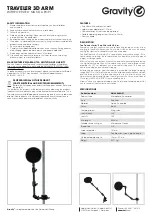
Chapter 4 - Operations
General
This section contains information about the various operating modes and features of the Wattcher
RF Monitor/Alarm.
Zero Adjust
The two panel meters should be checked for zero set under no power conditions. With no power
applied the meter pointers should set exactly on zero. If adjustment is required, turn the adjustment
screw until the pointer is set at zero.
Alarm Enable/Disable
The audible alarm will be enabled when the push-button is not depressed, and disabled when it
is depressed.
Fail-Safe / Non Fail-Safe Mode
Non fail-safe mode is selected when the push-button is not depressed, and fail-safe is selected
when it is depressed.
Non fail-safe mode—An interlock active condition is caused
only
by exceeding reflected power
trip value. Fail-safe mode—An interlock active condition can be caused by exceeding reflected
power trip value
or
if the Wattcher Unit is not operating.
Adjusting Reflected Power Trip Level
Ensure that the plug-in elements in the line section of transmission line are properly positioned
and directed. Make sure that the fail-safe/non fail-safe switch is in the desired mode.
While depressing the view push-button, rotate alarm level adjust screw until the pointer indicates
the desired trip level.
Connecting the Interlock
There are two sets of interlocks provided. Wire the interlocks based on transmitter requirements.
During an alarm condition the interlocks become active. An active interlock—in the non-fail safe
mode—causes the normally closed terminals to open and the normally open terminals to close.
Connection to the interlocks is achieved through a six-terminal Screw-Clamp plug connector.
Note: The opposite is true for fail safe mode.
Figure 6
Zero Adjust
Figure 7
Interlock Connector
17










































